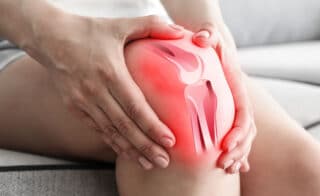
More Pain Management & Rehabilitation Articles
Understanding Chronic Pain

At least one member of nearly half (44%) of Americas households suffers from chronic pain. Within Maryland, 49% suffer from pain on a monthly basis and 40% experience pain almost daily.
The impact of chronic pain is devastating for the individual as well as society. Persons with chronic pain suffer physical, psychological, and social detriments. Many say that their pain disturbs their ability to sleep and their productivity at work. It interferes with the ability to participate in daily home, leisure, and recreational activities. It can negatively interfere with sexual relations as well as relations with family and friends.
Chronic pain sufferers describe feeling anxious, irritable, or depressed as a consequence of their pain. In severe cases, pain sufferers describe feeling helpless and alone. Chronic pain may be the single most costly medical problem in the U.S. Annual costs for medical expenses, lost income, and lost productivity are estimated to exceed $50 billion.
The International Association for the Study of Pain defines pain as “an unpleasant sensory and emotional experience associated with actual or potential tissue damage, or described by the patient in terms of such damage.” Acute pain is indicative of inflammation and tissue damage resulting from injury, illness or recent surgery. It is short lived and usually subsides after the underlying cause and subsequent inflammation has resolved. On the other hand, chronic pain can last for months or years.
Chronic pain may start as a progression of acute pain after an injury or illness, even perhaps after the original problem has resolved. It can also be a consequence of ongoing sources of pain related to medical conditions such as low back pain, cancer, arthritis, headaches, neuralgias and other pain disorders.
In chronic pain, constant firing of pain signals occurs in the nervous system. Over time, this persistent bombardment of pain signals can actually change the structure and function of the central nervous system thereby lowering the threshold of pain. For example, an individuals perception of a normal painful stimulus can actually be perceived as extremely painful or an individuals perception of a non-painful stimulus can actually be perceived as painful. These are only some of the examples of the complexities of chronic pain.
A skilled physical therapist will initially evaluate and treat involved painful nerves, muscles, and joints to decrease pain and improve function. This may lead to a decreased number of pain signals firing in the central nervous system and hopefully contribute to breaking of the pain cycle. Physical therapy can also be helpful in managing chronic pain by restoring normal movement patterns, developing a realistic exercise program, goal setting, pacing of activity and other self management techniques. Although the general medical approach to chronic pain is to manage the problem, there are occasions in which the underlying cause was not addressed but once treated may result in a significant improvement in ones pain. An example of a chronic pain condition often overlooked is myofascial pain syndrome, which describes pain due to sensitive knots in muscles called trigger points. Despite the fact that chronic pain is a medically complex problem and can influence all facets of an individuals life, a multidisciplinary treatment approach can alleviate ones suffering in the management of the condition.
Other Articles You May Find of Interest...
- How to Promote Bone Fracture Healing? Tips for Faster Healing
- Managing Chronic Back and Neck Pain
- Pervasiveness Of Pain
- Effective Solutions for Lower Back Arthritis: Medial Branch Blocks and Radiofrequency Ablation
- Spinal Compression Fracture Treatment Options
- Hiatal Hernia: A Common Cause For Heartburn
- Prevent and Treat Osteoporosis

















